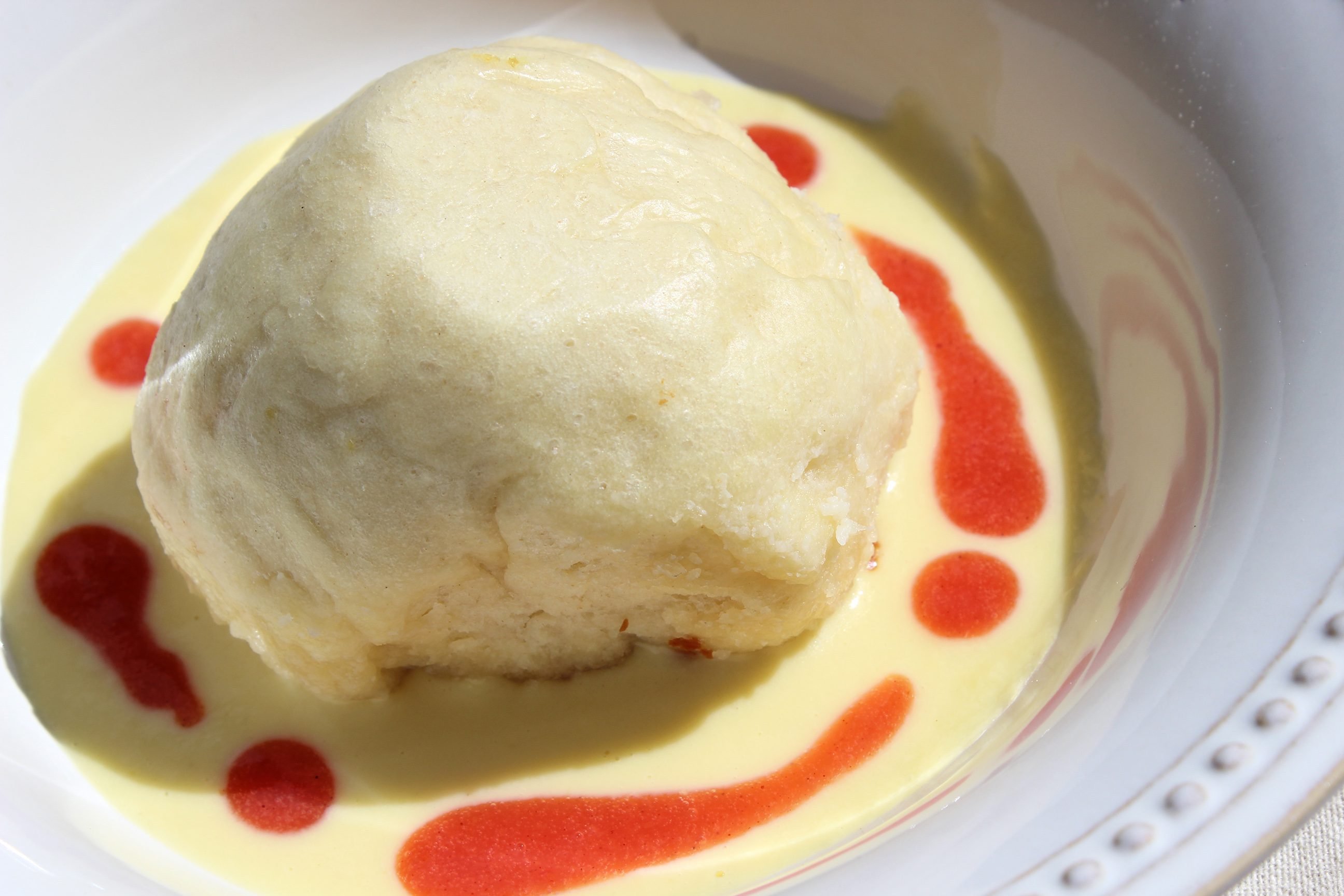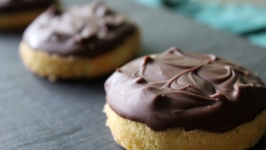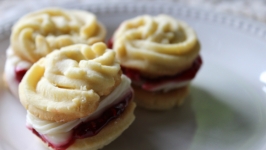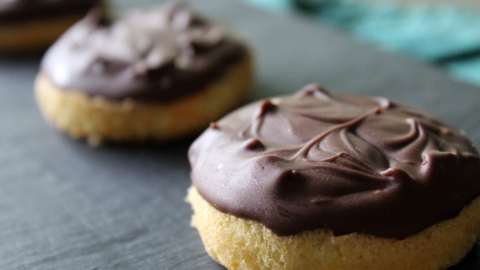Great British Blog-Along: Bread

Another week, another challenge and try as I might, I haven't convinced my partner that I need a baking tent in the backyard. (I'm not giving up hope.)
Episode three of “Great British Baking Show” was bread week, and like the bakers it gave me anxiety. Paul Hollywood pulled out a sinister challenge with Dampfnudel, a German steamed bun. (Fun fact: The plural is Dampfnudeln.)

While the contestants were nervous about impressing the judges, I had it worse: I have German in-laws. A failure here could sully the family name.
Want to join me on my blog-along? Get the recipes from each episode.
Bread is finicky, which is the main reason I avoid it. Elevation, humidity, flour type, and brand all play into whether or not your bake will succeed. Measurements need to be precise for the chemical reactions to take place to give your dough a proper rise. I decided to arm myself with a digital kitchen scale so I could stop converting ounces to cups and teaspoons, though I’ve found these conversions helpful so far.
| This equals ... | This |
|---|---|
| 2 tablespoons | 1 ounce |
| 25 grams | 1 ounce (roughly) |
| ¼ cup | 2 ounces |
| 150 milliliters | 5 ounces |
Here's your British baking vocabulary lesson for this week. Double cream: This is akin to heavy whipping cream, but it's less processed and contains a higher milk fat. I've never seen double cream in the U.S., so heavy whipping cream was a stand in. I decided to check out Metro Cooks where they had a selection of scales and landed on a $38 quality model that I'll put to good use. At my local Fred Meyer, they also had digital scales that cost $15-$30.
Not only that, but when I went to the store, they were all out of plums. This project was going off the rails real quick. I almost lost it when I bought active dry yeast instead of fast-acting yeast. (It does make a difference which you use; active dry yeast needs liquid to activate whereas fast-acting, aka rapid-rise, yeast is ground finer and can be mixed directly into dry ingredients.)
You'll also need a large, high-sided non-stick skillet with a tight-fitting lid, sometimes labeled as a jumbo fryer. The 5-quart size I needed isn’t included in a typical pot and pan set, though Ree Drummond’s line has a set with one that got surprisingly high marks from Consumer Reports. Once I found a pan that didn't give me sticker shock — a ceramic non-stick T-fal — I realized it had a steam vent, the opposite of what you want for steamed buns. Rewatching the episode, I see that the bakers had this problem, too. Some taped their hole shut, others did a sheet of aluminum foil under the lid, and some plugged it with a piece foil. I made a plug.
Recent days in Anchorage have been chilly, so there was no way my buns would rise in the suggested hour. Aha! Another hack, I turned my oven into a proving drawer using some boiling water in a pan underneath my dough bowl. This tip from Cook’s Illustrated ups the heat to 80-90 degrees and adds humidity, both super friends of yeast.
Back in the kitchen, I'd made my dough and it was time to knead. It really does take some upper body strength to knead by hand, but that's a Paul Hollywood recipe hallmark, who's said in previous seasons that he mixes all his dough by hand because he “can feel” when it's just where it needs to be.
An epiphany struck me halfway through my knead. I don't need to avoid carbs in my diet, I need to spend the energy to make the carbs I eat.
Another pearl of wisdom, do not try to make these on a weeknight. It's a time-consuming task that all together took about 4 and a half hours to complete. (It's over the allotted challenge time, but they don't have to eat dinner, feed the pets, do the dishes, and then clean the kitchen. After all the effort, I was going to make sure mine were cooked through.)
I think I know how the bakers must feel to work so hard, only to have Paul shove his finger right through their sweet buns and into their hearts.

I gave mine the time they needed for a fully cooked center before removing the lid (do not lift it to check them!) and the extra minutes spent reducing the poaching liquid to give them a nice carmelized bottom. A tip the recipe doesn't tell you is how to store them — on a plate upside down with the bottoms up, covered with a clean towel. A blog called The Spruce recommends eating them within 24 hours for the best quality.
They're not the prettiest bake, but it was definitely the most technical challenge so far. Next week is lacey pancakes, a popular sweet from 1615. For more renaissance cooking, you can check out “The English Housewife: Containing the Inward and Outward Virtues Which Ought to Be in a Complete Woman.” This 1615 best-seller by Gervase Markham was the epitome of women’s lifestyle advice literature at the time.
The Great British Baking Show airs Fridays at 8 p.m. on KAKM from Alaska Public Media and can be streamed free online at PBS.org.







